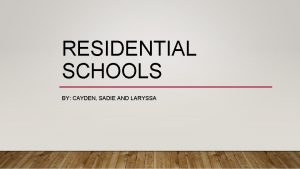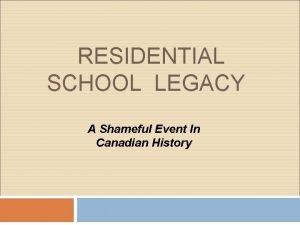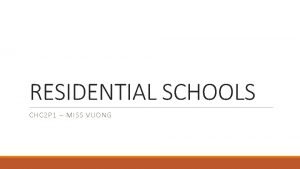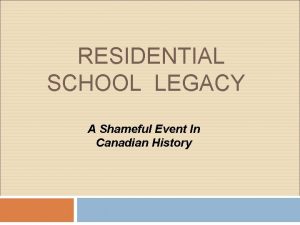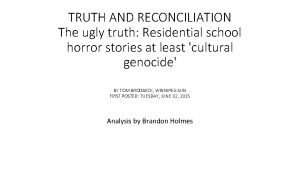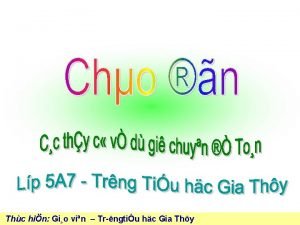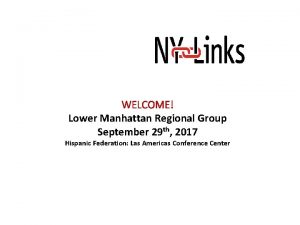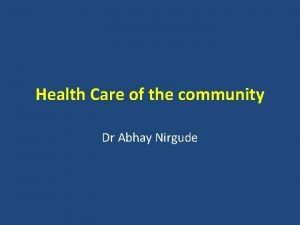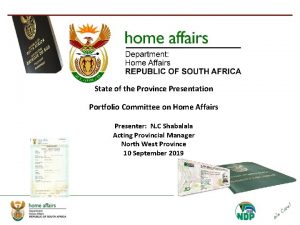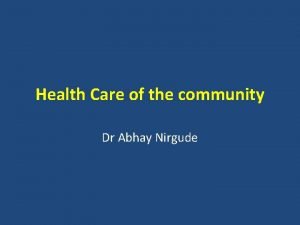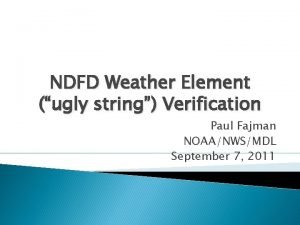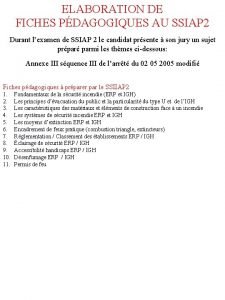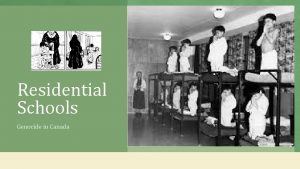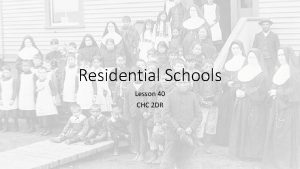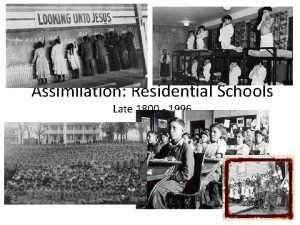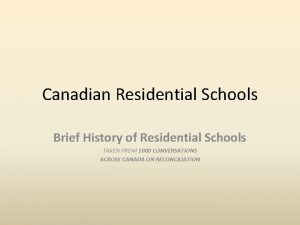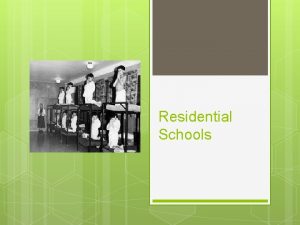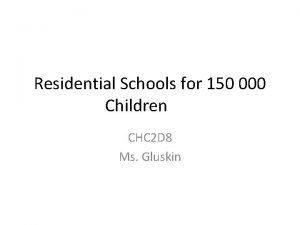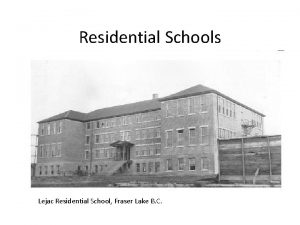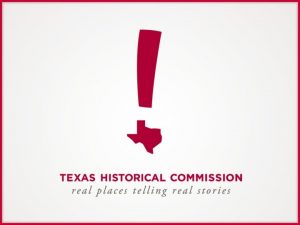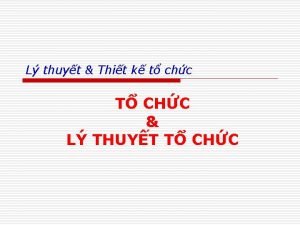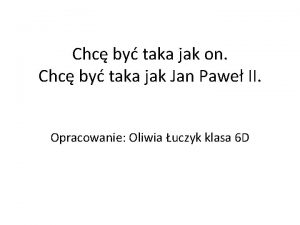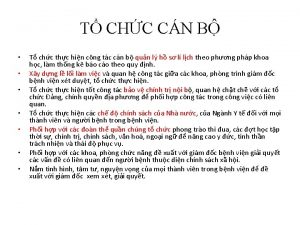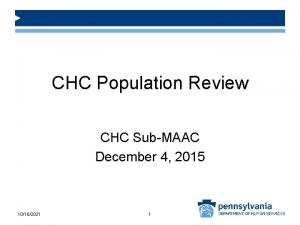RESIDENTIAL SCHOOLS CHC 2 P 1 MISS VUONG




















- Slides: 20

RESIDENTIAL SCHOOLS CHC 2 P 1 – MISS VUONG

AGENDA 1. Learning Outcomes 2. Minds On – Quote of the Day 3. Residential Schools (5 W’s) 4. Why Does it Matter Today?

LEARNING OUTCOMES Students will be able to… 1. Understand the origins of Residential Schools 2. Analyze the consequences of Residential Schools and connect it with present day 3. Think critically about Canada’s history and treatment of different minority groups

QUOTE OF THE DAY “I want to get rid of the Indian problem… Our object is to continue until there is not a single Indian in Canada that has not been absorbed. ” – Duncan Campbell Scott (Deputy Minister of Indian Affairs) House of Commons in 1920 [Purpose of Residential Schools]

TERMINOLOGY • Assimilate – To absorb into the dominant or major culture • Colonization – Sending settlers to establish political control over the people who already live there • Indian - A term used historically by Europeans to describe the first inhabitants of North and South America and used to define indigenous people under the Indian Act. The term has generally been replaced by Aboriginal Peoples as defined in the Constitution Act of 1982. (Currently FNMI)

RESIDENTIAL SCHOOLS – WHO? Who cared/cares? • Eligible Status Indian children and their families • Contemporary Aboriginal/non-Aboriginal communities • Government propaganda was designed during the school’s operation to shelter the general public from the realities of the schools. http: //www. youtube. com/watch? v=s_V 4 d 7 s. Xoq. U • Survivors and their families • Truth telling in Canada • Students/our class

RESIDENTIAL SCHOOLS – WHO? Federal government: In 1880, created the Department of Indian Affairs, with ministers known as Indian Agents. These agents had unprecedented powers over lives of the First Nations peoples. The job of Indian Agents was condensed into one individual – Chief Superintendent of Indian Affairs, who delegated most authority to the Superintendent General. Ie. Duncan Campbell Scott. Current Prime Minister of Canada, Stephen Harper for involvement in the national apology and reconciliation process.

RESIDENTIAL SCHOOLS – WHO? Bureaucracy: Varying levels of government authorities. i. RCMP, who assisted in the physical removal of children from their families and transportation to schools. ii. Medical Inspectors who made recommendations on the schools, Ie. P. H. Bryce.

RESIDENTIAL SCHOOLS – WHO? Church: • Protestant, Methodist, United, Roman Catholic, Anglican, Presbyterian. • The churches were on “civilizing missions” and would compete with each other for numbers of converted individuals. • While designed and implemented by the government, the daily running of the schools were administered by the individual church denominations.

RESIDENTIAL SCHOOLS – WHO? Communities: • First Nations families and networks, suffered extensive breakdown of communities, and losses of language and culture. • As well, non-Aboriginal public opinion, which remained largely unaware until recent years, perpetuating negative stereotypes and racism.

RESIDENTIAL SCHOOLS – WHO?

RESIDENTIAL SCHOOLS – WHO? Residential School Students: • Indian status children who attended a residential school, some who had positive experiences and gained a formal education, and others who experienced dramatic sexual, physical, emotional and spiritual abuse. • As well, the children and grandchildren of residential school survivors who are subject to the intergenerational effects of abuse and the cycle of trauma. • In all, about 150, 000 First Nation, Inuit and Métis children were removed from their communities and forced to attend the schools.

RESIDENTIAL SCHOOLS – WHAT? What were Residential Schools? • An extensive system of schools set up with the deliberate intention of assimilating and civilizing status Indian children into the dominant Western culture. • Masked as industrial schools designed to instruct manual labour skills while providing an academic education.

RESIDENTIAL SCHOOLS – WHAT? When did this happen? • Late 1860’s (government started funding for this with help of the Church to run them) • 1920 – Federal legislation that required all First Nations children (7 -15 yrs) needed to attend (Metis not forced to attend, but education not guaranteed) • 1930’s – Number of Residential Schools decreased • 1979 – Only 12 left in the country • 1996 – Last one closed down in Saskatchewan • 2008 – Formal apology from Canadian government and some Churches

RESIDENTIAL SCHOOLS – WHERE? Where did this happen? • As residential schools were a policy of the federal government, they were located all across Canada. • British Columbia was one of the provinces with the greatest number of schools, and many of these were located in the communities that we are familiar with today.

RESIDENTIAL SCHOOLS – WHY? Why did this happen? • The intentions of the residential school system were described in the edict; ” kill the Indian in the child”, by eliminating any cultural ties with the child’s home community. The process is describes as aggressive assimilation with direct motives of eliminating the social and cultural category of First Nations peoples entirely. • This practice was pursued for economic and industrial progress, as well as in the interests of religious missionization. • Eurocentric ideas of the time dominated the colonizing government’s body of thought, which raised the question of the “Indian problem”. Various destructive solutions were pursued to (perpetuate) this European dominance and to facilitate the development of First Nations lands into the country of Canada.

THOMAS MOORE

RESIDENTIAL SCHOOLS – REVIEW • Intent: To educate and assimilate • What took place: Separation from families, new names, severely punished, physical and sexual abuse (1 in 5), diseases, fires, accidents, suicide, families notified of deaths, free labour, Tuberculosis (TB) • Impact: Deaths, PTSD, students didn’t belong anywhere after they ‘graduated’, not prepared (few went past grade 6 and graduated with no basic reading skills) loss of language, culture, identity, parenting culture, etc.

RESIDENTIAL SCHOOLS – REVIEW • http: //wherearethechildren. ca/en/timeline/

RESIDENTIAL SCHOOLS – WHAT NOW? What now? • Reconciliation efforts • Support for FNMI communities for PTSD (intergenerational trauma) • What do you hear in the news now about FNMI communities?
 Residential schools
Residential schools Schools canada
Schools canada Residential school photos grim legacy cultural
Residential school photos grim legacy cultural Residential schools canada
Residential schools canada Residential schools in canada map
Residential schools in canada map Residential schools horror stories
Residential schools horror stories Before and after residential schools
Before and after residential schools Reshuege math
Reshuege math Dual eligible chc
Dual eligible chc Vin thc
Vin thc Ryan nena chc
Ryan nena chc What is chc
What is chc Phc staff pattern
Phc staff pattern Chc staff pattern
Chc staff pattern Chç
Chç Ratlou chc
Ratlou chc Phc staffing pattern
Phc staffing pattern Ocnl lkly chc schc
Ocnl lkly chc schc Pcfsa
Pcfsa Chc ssiap
Chc ssiap Huntsville city schools powerschool
Huntsville city schools powerschool
